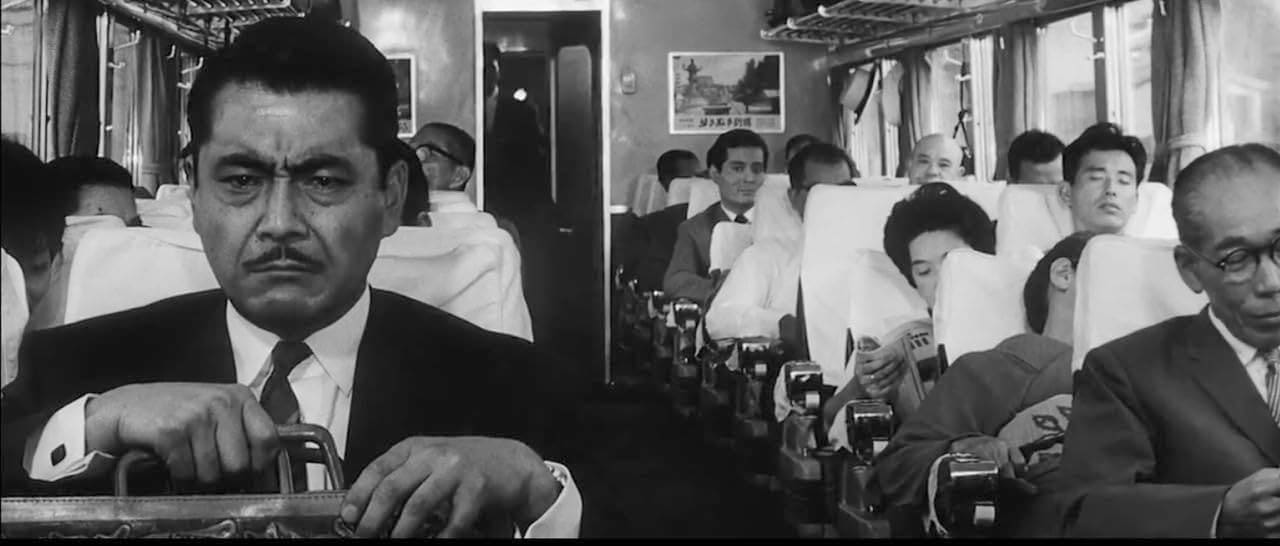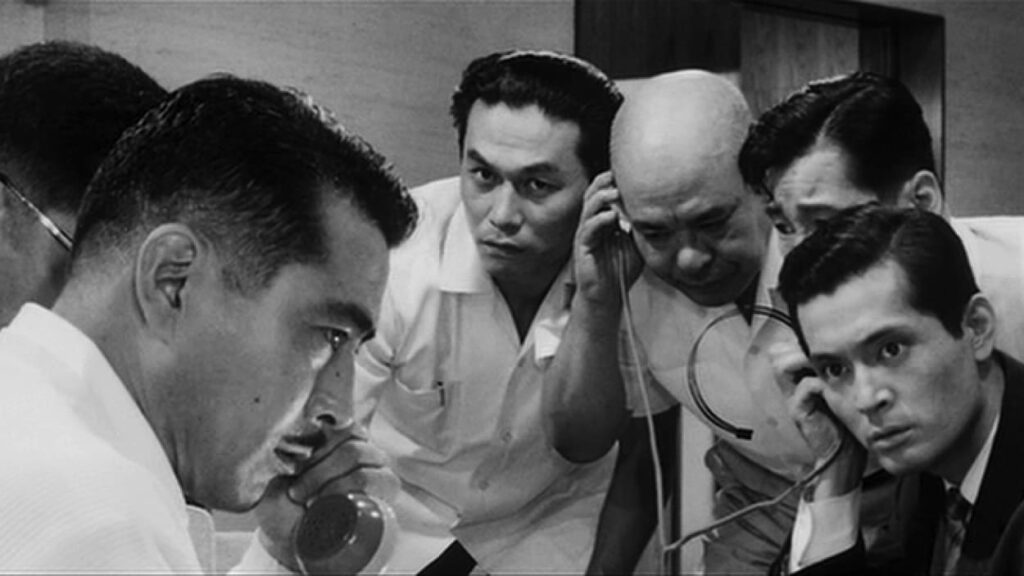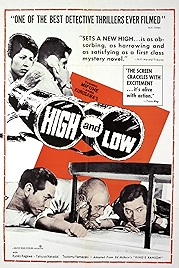Akira Kurosawa’s High and Low – one of a run of successful movies from him in the late 1950s and early 1960s – is something of a surprise. It sets off in one direction, with a moral dilemma, only to wind up in a different place entirely, as a police procedural the likes of which you can catch on TV any night of the week.
This comes as a bit of a relief, because for its first third the tension is so exquisitely pitched it’s hard to look at the screen.
It’s based on an Ed McBain thriller and tells the story of a businessman locked in the middle of a struggle for control of the shoe company he’s involved with. The first swerve comes early on. The plot appears to be signalling that what we’re about to watch is going to be all about a struggle for control. With a moral element thrown in – Mr Gondo (Toshirô Mifune) wants to carry on making quality shoes; his rivals are keener to go for trash and the easy money. But all this is brought to the hardest of hard plot stops when Gondo’s child is kidnapped and a ransom note arrives for an absolutely vast amount of money, ten times what kidnappers usually ask for.
The second swerve comes when it turns out it isn’t his son who’s been kidnapped at all. Instead it’s the son of his chauffeur – the two boys were playmates. When the kidnapper realises his mistake, unfazed he sticks to his guns – pay up for your chauffeur’s son or the boy dies.
What should Mr Gondo do? While his chauffeur stands to one side, head bowed abjectly – his allegiance to his boss ahead of his duties as a father, perhaps – Gondo wrestles with his conscience, switching this way and that as he weighs the life of a child of an employee against the future prospects of his own family and his own ambitions to seize control of the company.
This is the stuff that’s hard to watch, particularly the way that Yutaka Sada plays Aoki the chauffeur, the meek supplicant barely moving and inclined forward at the waist to Mifune’s tough nut pacing the room and making “decisive” pronouncements. Grim.
Thankfully, another plot swerve takes the story into a different realm entirely, as Chief Detective Tokura (Tatsuya Nakadai) and his bluff right hand man “Bosun” Taguchi swing a gigantic police operation into place, first to find the boy and then to locate the money and the kidnapper.
The detail of this operation is what the second half of the film is about, and it is fantastically forensic for a film of the time, with the police coming at what looks like nothing at all from every conceiveable direction until results start to come in and their net starts to close in on their man, a hospital intern (Tsutomu Yamazaki) whose access to heroin become crucial as the plot swerves yet again.
As with many a Kurosawa film set in the modern era, it’s not entirely at ease with new developments from the West. Its villain is notably a hipster dude in shades and at a crucial juncture he heads off to the fleshpots of the town to score more drugs, where drunken American sailors of all races cavort with silly Japanese women. Kurosawa is clearly shooting this stuff for real – those are drunken revellers out of their heads on having a good time.
And he ups this critique still further in scenes set among drug addicts, where no extreme of caricature seems to be too much.
The McBain plot and Kurosawa’s adaptation of it keep swerving right to the final scene, where Gondo and the kidnapper have a scene together on Death Row that’s a confrontation straight from a Sam Fuller movie.
At one level it’s a potboiler pure and simple, unusual fare for Kurosawa. At another it’s a demonstration that this master of the slow-build drama and powerful but simple characterisation can move as fast as any of his upstart rivals. He can. He does. As to what the title means – who’s high, who’s low – he leaves that dangling.
High and Low – Watch it/buy it at Amazon
I am an Amazon affiliate
© Steve Morrissey 2023


